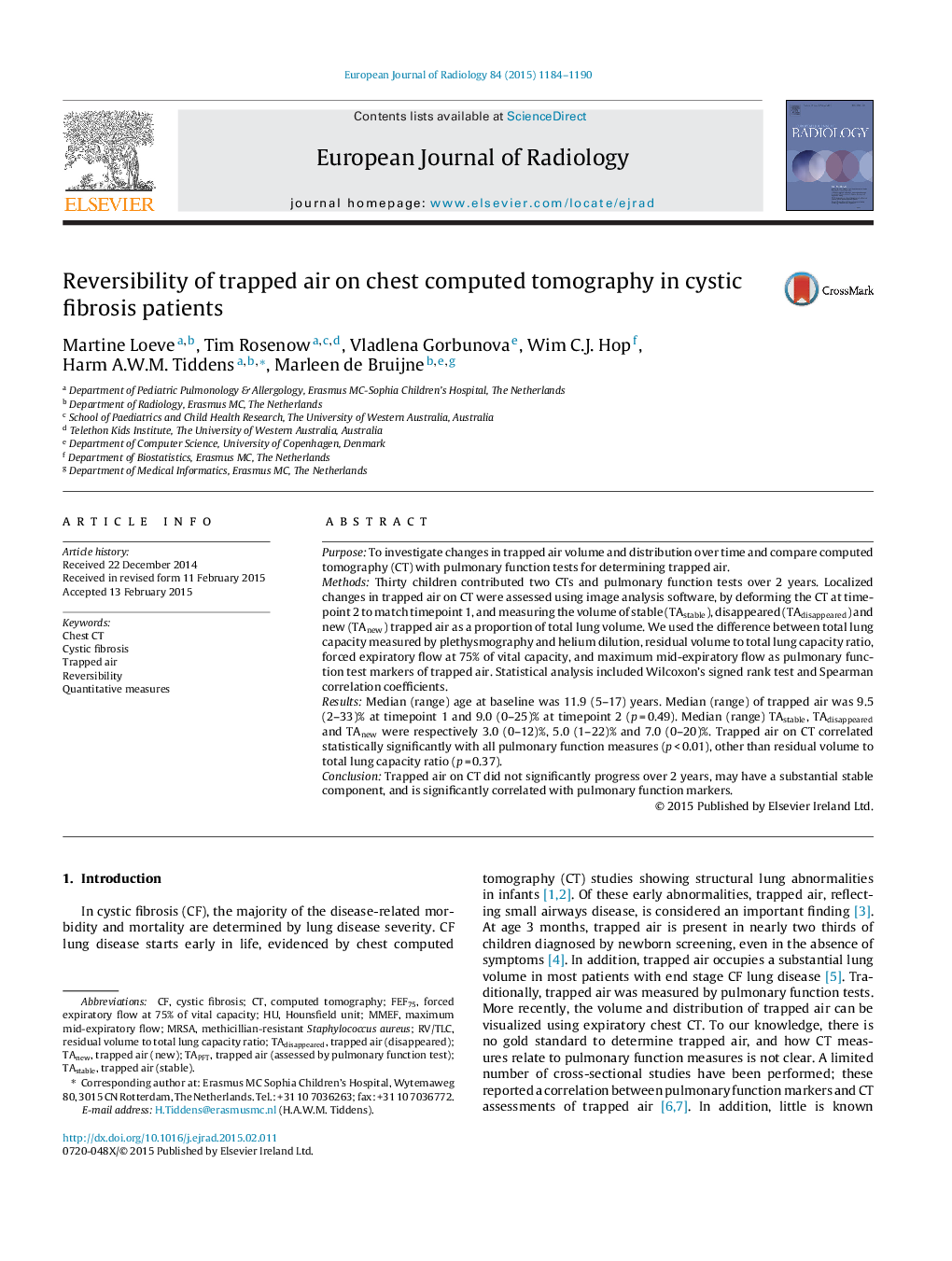| Article ID | Journal | Published Year | Pages | File Type |
|---|---|---|---|---|
| 4225120 | European Journal of Radiology | 2015 | 7 Pages |
•Trapped air in CF is thought to represent small airways disease.•Trapped air in CF is weakly associated with small airway measures of lung function.•Around one third of regional trapped air is stable in CF over 2 years.
PurposeTo investigate changes in trapped air volume and distribution over time and compare computed tomography (CT) with pulmonary function tests for determining trapped air.MethodsThirty children contributed two CTs and pulmonary function tests over 2 years. Localized changes in trapped air on CT were assessed using image analysis software, by deforming the CT at timepoint 2 to match timepoint 1, and measuring the volume of stable (TAstable), disappeared (TAdisappeared) and new (TAnew) trapped air as a proportion of total lung volume. We used the difference between total lung capacity measured by plethysmography and helium dilution, residual volume to total lung capacity ratio, forced expiratory flow at 75% of vital capacity, and maximum mid-expiratory flow as pulmonary function test markers of trapped air. Statistical analysis included Wilcoxon's signed rank test and Spearman correlation coefficients.ResultsMedian (range) age at baseline was 11.9 (5–17) years. Median (range) of trapped air was 9.5 (2–33)% at timepoint 1 and 9.0 (0–25)% at timepoint 2 (p = 0.49). Median (range) TAstable, TAdisappeared and TAnew were respectively 3.0 (0–12)%, 5.0 (1–22)% and 7.0 (0–20)%. Trapped air on CT correlated statistically significantly with all pulmonary function measures (p < 0.01), other than residual volume to total lung capacity ratio (p = 0.37).ConclusionTrapped air on CT did not significantly progress over 2 years, may have a substantial stable component, and is significantly correlated with pulmonary function markers.
